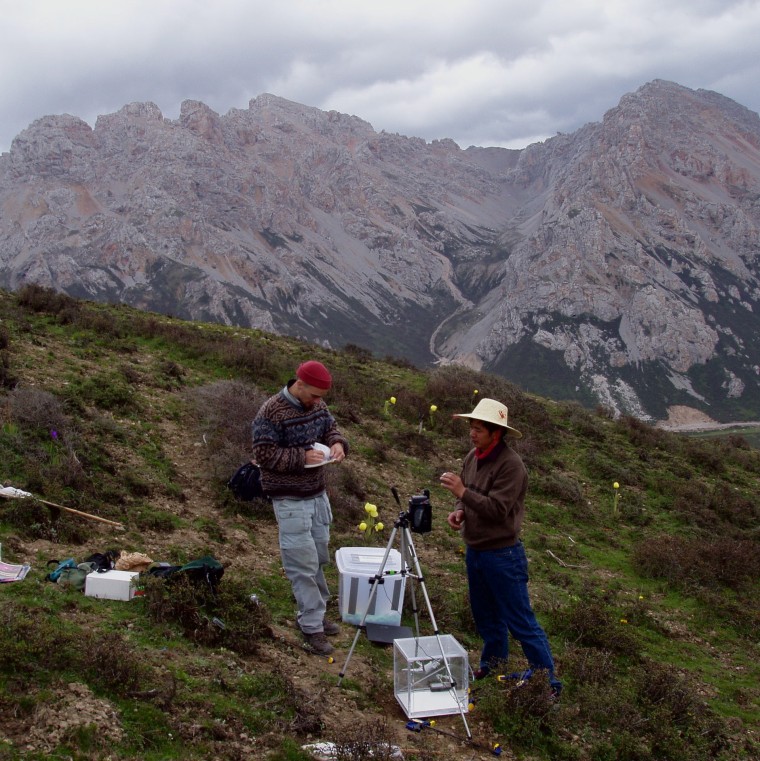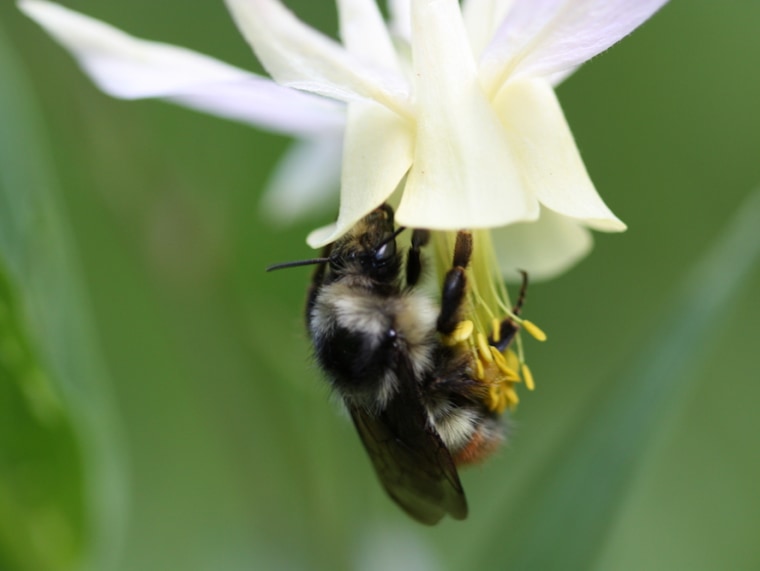The bumblebee has earned a reputation as an unlikely flier, ever since one French entomologist incorrectly argued in the 1930s that the chubby insects defy the laws of physics when they stay in the air. As anyone who's seen one can tell, the bugs can wing it like pros. Now, mounting evidence suggests bumblebees are also high-achievers when it comes to flight.
One extreme species of the bug, a new study reports, is specially adapted to high-altitude flight, and — theoretically — can fly over the highest peak on Earth, Mount Everest.
Bumblebees caught on mountainsides in southern China, ones that usually live around 5,000 meters (16,404 feet) above sea level, exhibited a willingness in simulated conditions to wing it as high as 9,000 meters (29,527 feet). Everest tops out at about 8,850 meters (29,000 feet).
"We were shocked," said Michael Dillon, a biologist at the University of Wisconsin who was part of the bug capture party trekking through the Sichuan Prefecture in 2005.
"There is a perception that the bumblers are bumbling fliers," he told NBC News. "They’re big, they’re loud, they don’t look particularly graceful when they're flying around." On the contrary, Dillon and team's findings indicate that the bugs are truly remarkable fliers.
The researchers caught and trapped the bugs in a vacuum-sealed jar. They gradually sucked out the air with a hand-pump, to mimic the feeling of thinning air and flying higher.
Bumblebees would take off, hover and then climb to the second section of the jar up until they hit a simulated "height" of 9,000 meters. Beyond that, at a simulated height of about 9,200 meters, they'd take off and hover, and then collapse, the researchers report in the Wednesday edition of Biology Letters.

By comparison, bar-headed geese, among the world's highest-flying birds, can hit 6,400 meters (21,120 feet).
As the air thins, bumblebees increase the arc through which their wings flap, getting a wider sweep of their wing with every beat. At the highest altitudes, their wing sweep was 15 percent wider.
In March, researchers reported that a unique wing design — a flexible joint — helped bumblebees carry pollen loads. The researchers proposed that robot makers could try and mimic this feature in designing more rugged mechanical bugs.
"They’re able to deliver O2 (oxygen) to muscles, upwards of 50 times as a human athlete — they have incredibly demanding flight muscles," Dillon said. But the scientists have yet to pin down a physiological explanation for this feat.
Have any bumblebees been spotted near the real peak? "Not that I know of!" Dillon told NBC News. "It is probably way too cold and there are likely no flowers."
And do the bees in your backyard have the same power of super-flight, or is this an ability that bees that live in the mountains have acquired? That's a question that Dillon hopes to answer next.
Dillon and Robert Dulley are the authors of "Surpassing Mt. Everest: extreme flight performance of alpine bumble-bees" published in the Wednesday edition of Biology Letters.
Nidhi Subbaraman writes about science and technology. You can follow her on Facebook, Twitter and Google+.
